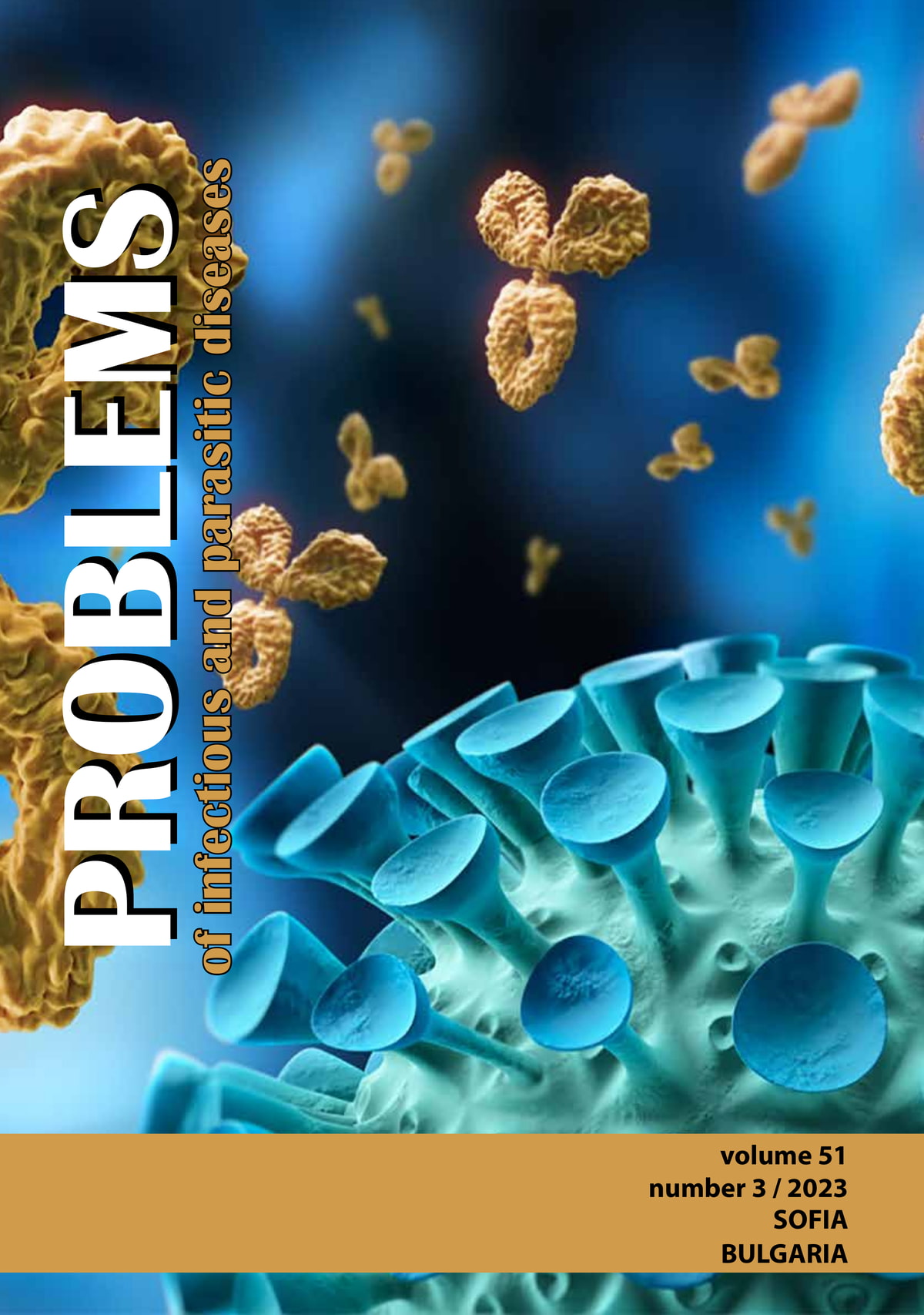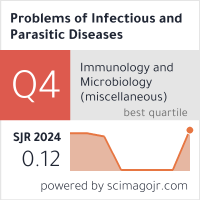NONTUBERCULOUS MYCOBACTERIA DIVERSITY IN KARST WATERS AND BIOFILMS IN BULGARIAN CAVES
DOI:
https://doi.org/10.58395/q41yrx48Keywords:
Nontuberculous Mycobacteria, geographical diversity, Bulgarian cavesAbstract
Background: Nontuberculous Mycobacteria (NTM) are emerging pathogens causing opportunistic infections in humans and animals. Their distribution in the waters and caves of Bulgaria is poorly studied. Climatic changes are associated with changes in the amplitudes of ambient and water temperature, as well as changes in the amount of precipitation which play an essential role in the creation of reservoirs of some types of NTM in the environment.
Material and Methods: We optimized the methods for successful isolation of environmental NTM and then used molecular genetic methods for identification.
Results: A total of 235 samples (karst water, sediments, soil, bat guano) were collected in some caves of the following karst regions: 203 in Vratsa Karst area, 204 in Ponor Karst area, 205 in Bezdenski area and 303 in Karst and caves of Bosnek region. Primary isolation of mycobacteria by Löwenstein–Jensen at room temperature was more successful than on liquid media at 37°C. We identified NTM in 10% (n=24) from these materials. Diverse NTM included: M. chelonae (n=3), M. gordonae (n=2), M. intermedium (n=3), M. scrofulaceum (n=1), M. szulgai (n=4), M. fortuitum group (n=4), NTM mix culture (n=5), M. terrae complex (n=1), Mycobacterium sp. (n=1). Rapidly growing NTM (M. chelonae, M. fortuitum group) were the most common. The isolates belonged to group of environmental saprophytes (Risk group 1) and potential pathogens (Risk group 2).
Conclusions: We successfully implemented a procedure for decontamination and isolation of NTM from the environment. For the first time in the country, NTM species were identified in biofilms, karst waters, soil and bat guano within caves. The presence of NTM in cave ecosystems represents a potential source for human infection.
Downloads
References
Pedley S. et al. (2004). Pathogenic mycobacteria in water. Limnology & Oceanography; 87(5), 255–258.
Adékambi T. (2009). Mycobacterium mucogenicum group infections: a review, Journal Compilation 2009 European Society of Clinical Microbiology and Infectious Diseases, CMI, 15, 911–918. PMID: 19845703; https://doi.org/10.1111/j.1469-0691.2009.03028.x
King, A. D., et al. (2016), Emergence of heat extremes attributable to anthropogenic influences, Geophys. Res. Lett., 43, 3438– 3443, https://doi.org/10.1002/2015GL067448
Panaiotov S., I. Simeonovski, V. Levterova, V. Karamfilov, N. Brankova, K. Tankova, K. Campbell, P. Jacob, K. Helmi, Bas Boots, E. D’Ugo, S. Marcheggiani, L. Mancini, U. Breitenbach, E. Mielke and T. Kantardjiev. (2015). Two-Year Monitoring of Water Samples from Dam of Iskar and the Black Sea, Bulgaria, by Molecular Analysis: Focus on Mycobacterium spp., Academic Editor: Paul B. Tchounwou, Int. J. Environ. Res. Public Health 2015, 12(7), 7430-7443; https://doi.org/10.3390/ijerph120707430
Pavlik, I.; Ulmann, V., Modra, H., Gersl, M., Rantova, B., Zukal, J., Zukalova, K., Konecny, O., Kana, V., Kubalek, P.; et al. (2021). Nontuberculous Mycobacteria Prevalence in Bats’ Guano from Caves and Attics of Buildings Studied by Culture and qPCR Examinations. Microorganisms 2021, 9, 2236. https://doi.org/10.3390/microorganisms9112236
Ангел Велчев, (2016). Карст и карстови ландшафти (Избрани трудове), изд. „Ивис“, В. Търново.
Kosznik-Kwaśnicka K, Golec P, Jaroszewicz W, Lubomska D, Piechowicz L. Into the Unknown: Microbial Communities in Caves, Their Role, and Potential Use. Microorganisms. 2022 Jan 20;10(2):222. https://doi.org/10.3390/microorganisms10020222; PMID: 35208677; PMCID: PMC8877592.
Попов, В. 1976. Райониране на пещерите в Н.Р. България. Про6л. геогр., No 2, с. 14-24.
Kazda, J.; Pavlik, I.; Falkinham, J.; Hruska, K. (2009). The Ecology of Mycobacteria: Impact on Animal’s and Human’s Health, 1st ed.; book; Springer: Dordrecht, 2009; 520p; https://doi.org/10.1007/978-1-4020-9413-2
Parashar D, Chauhan DS, Sharma VD, Chauhan A, Chauhan SV, Katoch VM. Optimization of Procedures for Isolation of Mycobacteria from Soil and Water Samples Obtained in Northern India. Appl Environ Microbiol 2004;70:3751-3, https://doi.org/10.1128/AEM.70.6.3751-3753.2004
Wayne LG, Kubica GP (1986): Genus Mycobacterium Lehmann and Neumann 1896, 363AL. In: Sneath PHA, Mair NS, Sharpe ME, Holt JG (eds.): Bergey’s Manual of Systematic Bacteriology. The Williams and Wilkins Co., Baltimore. 1436–1457.
Breitbart M, Hoare A, Nitti A, Siefert J, Haynes M, Dinsdale E, Edwards R, Souza V, Rohwer F, Hollander D (2009): Metagenomic and stable isotopic analyses of modern freshwater microbialites in Cuatro Cienegas, Mexico. Environmental Microbiology 11, 16–34; PMID: 18764874; https://doi.org/10.1111/j.1462-2920.2008.01725.x
De Mandal S, Panda AK, Lalnunmawii E, Bisht SS, Kumar NS (2015a): Illumina-based analysis of bacterial community in Khuangcherapuk Cave of Mizoram, Northeast India. Genome Data 5, 13–14
TC Covert, MR Rodgers, AL Reyes, GN Stelma Jr. (1999). Occurrence of nontuberculous mycobacteria in environmental samples Appl Environ Microbiol, 65 (1999), pp. 2492-2496; https://doi.org/10.1128/aem.65.6.2492-2496.1999
Downloads
Published
Issue
Section
License
Copyright (c) 2024 Yuliana Atanasova, Rayna Antova, Lyubomira Boyanova, Lyubomira Grigorova, Stanislava Yordanova (Author)

This work is licensed under a Creative Commons Attribution 4.0 International License.






